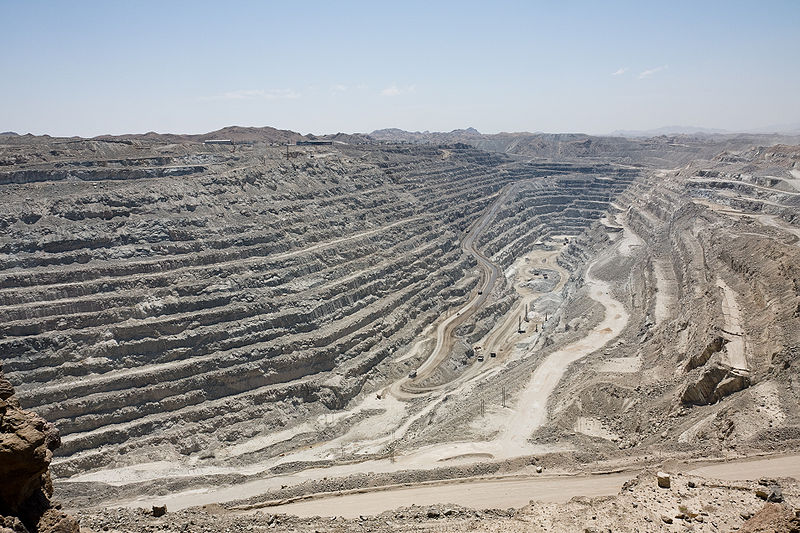Uranium is mined all over the world. There a number of different techniques that have been developed to extract uranium from various types of sources.
Open pit mining is a technique where the material (called the overburden) above a uranium deposit is removed by drilling and blasting. The uranium bearing ore is blasted to pulverize it and then excavated with earth moving equipment. Water is sprayed over the pit to reduce the dust released into the atmosphere. Open pit mines devastate a landscape and pollute streams, rivers and lakes.
For deposits that are too far underground to use the open pit techniques, tunnels are dug to the uranium ore. Shafts called crosscuts are dug horizontally into the vein of ore at different levels. Tunnels called drifts are branched out from the crosscut. Slopping tunnels are then dug between the crosscut levels. Blasting and digging are used to remove the ore. One type of mining fills in the holes created by ore removal and the other just leaves large holes. Flatter org bodies extract the ore in “rooms” and leave pillars of ore to hold up the ceiling of the mine. Radon gas poses a significant danger in this type of mining.
In heap leaching, oxides of uranium are piled in heaps on layers of plastic on leveled ground with a slight gradient. Sulfuric acid is sprayed on the heaps of ore and the uranium is chemically leached from the ore. The solution of acid and uranium runs down the plastic layer and accumulates in pools. The solution in the pools is pumped out and taken to facilities for further processing. This type of mining poses a serious danger of pollution of surface water in the area of the mine.
In-situ leaching is a technique where the ore is left in the ground and leaching chemicals are pumped into the ground water in the ore body. The resulting solution is then pumped to the surface and taken away for processing. Depending on the chemistry of the ore, acidic or alkaline chemicals are used. In order to do in-situ leaching, water carrying leaching chemicals has to be able to percolate through the ore body. There is also the concern that the leaching chemicals may pollute ground water away from the mine.
Uranium is present in low concentrations in sea water. Research on recovering uranium from the world’s oceans has been carried out since the 1960s. Titanium oxide was tested for extraction and then abandoned because of low efficiency. Japanese researchers have found that a special irradiate polymer has the ability to collect heavy metals when immersed in sea water. This techniques is ten times as efficient as the titanium oxide approach.
Each technique has benefits and drawbacks. In general, pollution of ground water, surface water, land and the atmosphere are major concerns as is the threat of radon gas and uranium dust to the health of the workers.
Rössing open pit uranium mine in Namibia.
